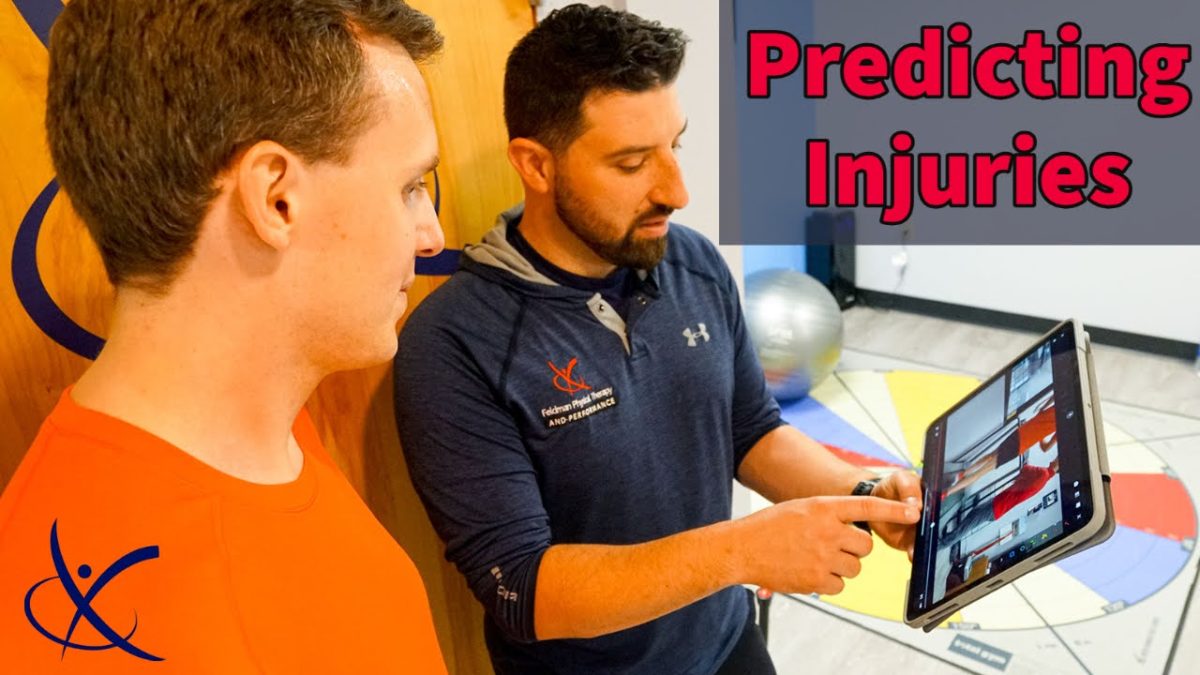
Arthritis 101
November 14, 2021
5 Winter Running Tips
December 5, 2021Can you predict injuries?
Yes, we can predict when someone is headed down a path of destruction. Injuries often have patterns that precede them, and once these patterns can be identified, it is easier to predict them.
We take both subjective and objective information to come up with a confident prediction. Last year we were included in a unique beta-test (of sorts) cohort. We now have access to a dashboard that tracks clients of our choosing and gives us a visual representation of their overall well-being with regards to stress (good and bad) and recovery. It’s pretty much what we’ve been hoping for! Now we have the ability to take the information our clients give us, and complement it with this software to give us a more accurate summary of their physical readiness to perform, train…or just live! More on this later.
When it comes to new clients, each appointment starts with an in-depth conversation. I like to get a comprehensive lens into your world. Not just with regard to physical activity, but your life.
As a good mentor put it: “A lens into your ecosystem.”
This begins our analysis of subjective clues.
How are you doing? How are you sleeping? Eating? Do you feel relaxed when you go to sleep? Do you feel like you get restful sleep and wake up refreshed? Do you always feel rushed? How is work? How is your home/personal life? These are the questions we generally start with to get an idea of how someone is at their baseline without physical activity. Notice we haven’t even gotten to discussing workouts yet.
In the hierarchy of dealing with injuries or risks of injuries, overall well-being and life stress is the first box to check. This is paramount above all else. Your body’s ability to be resilient (perform and recover) has a direct correlation to your overall stress. And your body doesn’t care where that stress comes from. Exercise, poor sleep, or an insufferable boss…your body responds the same. With increased stress comes decreased resilience, and ultimately compromised health. For this reason, the sniffles and a muscle pull are considered the same outcome. Poor physical resilience.
You can see the direction we’re going here, yes? Overall health is more than just how much you can exercise, and how much water you drink. And when it comes to assessing risks of injuries, increasing life stress can have the same toll as overtraining or not taking rest days.
Now let’s move on to the objective side of things. Data!
In the words of Britney Spears (I know I’m gonna catch flack for this reference): “gimme gimme more.” Well, to a point. I don’t necessarily like to go overkill with data, but there are some very powerful metrics at our disposal with some of the new wearable tech. The newer lines of Garmin watches provide information on heart rate, pulse oxymetry, sleep, etc. It can get overwhelming so to simplify things, we’ll talk about measuring overall stress and overall recovery.
The technology will analyze all data from workouts and daily activities to give us a summary of stress. This summary is plotted on a chart. Green is good. Yellow is undesirable. And red is dangerous. Remember this can be good stress (workouts) or bad stress (life frustrations). Over the course of weeks and months, we can track the trends and see if you are increasing stress too quickly and the program will adjust your position on the chart accordingly. This is essentially the “Acute-Chronic Workload Ratio” concept that I’ve talked about in the past. If you start to perform an activity at a rate that exceeds what you are used to, the program will show us the risk of injury creeping out of the green zone into the yellow zone, or worse the red zone.
With regard to recovery, the same rules apply. When worn correctly, we can track sleep data and appreciate not only how much sleep but the quality of sleep as well. The devices can track total deep sleep, sleep interruptions, etc., and come up with a decent idea of how well-rested you are. Recovery can also be tracked throughout the day. If you are experiencing a trend of poor sleep, then daily activities will take more of a toll on you than if you were well-rested. Think of it like a battery draining.
We can now track how well or poorly charged your battery is!
This translates directly into how well you recover from daily stress and then how well-prepared you are to continue with more stress. This can be physical or life. It may sound complicated, but intuitively we understand this conventional notion of “burning the candle at both ends.”
This dashboard has had a very high rate of success with predicting COVID and illness in initial users over the past 18 months. This leads me to perhaps the best use of our efforts here: catching potential issues before they rear their ugly heads. A good portion of athletes and recreational individuals feel great before an injury or illness occurs. “It just came out of nowhere” is not an uncommon groan. With this objective method of complimenting the self-reports, we can see when someone is coming dangerously close to that danger zone and make adjustments accordingly.
Keep in mind these are guidelines. There is no perfect methodology here, and there will always be those individuals who fall outside of these rules. But for the lion’s share of people, we can use this approach to predict the risk of injury, illness, and thankfully make appropriate changes. This is where the true benefit lies. Not to just mitigate injury for the sake of preventing injuries, but because your health depends on your ability to minimize risks.





